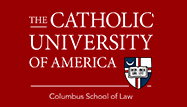Abstract
The phrase “cat’s paw” comes from an Aesop’s fable and has been used to define a person used by another as a tool or a scapegoat. The phrase was coined and injected into employment discrimination law by Judge Richard Posner in Shager v. Upjohn Co. and later adopted by the U.S. Supreme Court in Staub v. Proctor Hospital. In Staub, the Supreme Court held that an employer could be liable for an adverse employment decision that was based on the recommendation of a supervisor who possessed a discriminatory or retaliatory bias against the adversely affected employee. However, the Supreme Court declined to address whether the discriminatory bias of a low-level co-worker could also be imputed to the employer under the “cat’s paw” doctrine.
In Vasquez v. Empress Ambulance Services, Inc., the Second Circuit used negligence-based principles of agency law to expand the “cat’s paw” liability of employers for the discriminatory or retaliatory bias of a non-supervisory co-worker, where an employer’s own negligence gives effect to the an employee’s impermissible bias and causes the victim to suffer an adverse employment decision. Both the U.S. Supreme Court and the Second Circuit suggested that a thorough independent investigation could be a defense to a “cat’s paw” claim. However, they both declined to provide guidelines or delineate standards an employer should use when conducting an independent investigation to ensure it is sufficient to protect the employer from cat’s paw liability.
This Note argues that the Second Circuit’s decision was correct and is consistent with the purpose of Title VII and principles of agency law. It further suggests that there is a need to define what a proper independent investigation entails, and concludes by recommending measures employers should adopt to minimize the risk a “cat’s paw” claim.
Recommended Citation
Crystal Jackson-Kaloz,
Cat Scratch Fever: The Spread of the Cat’s Paw Doctrine in the Second Circuit,
67
Cath. U. L. Rev.
410
(2018).
Available at:
https://scholarship.law.edu/lawreview/vol67/iss2/11



